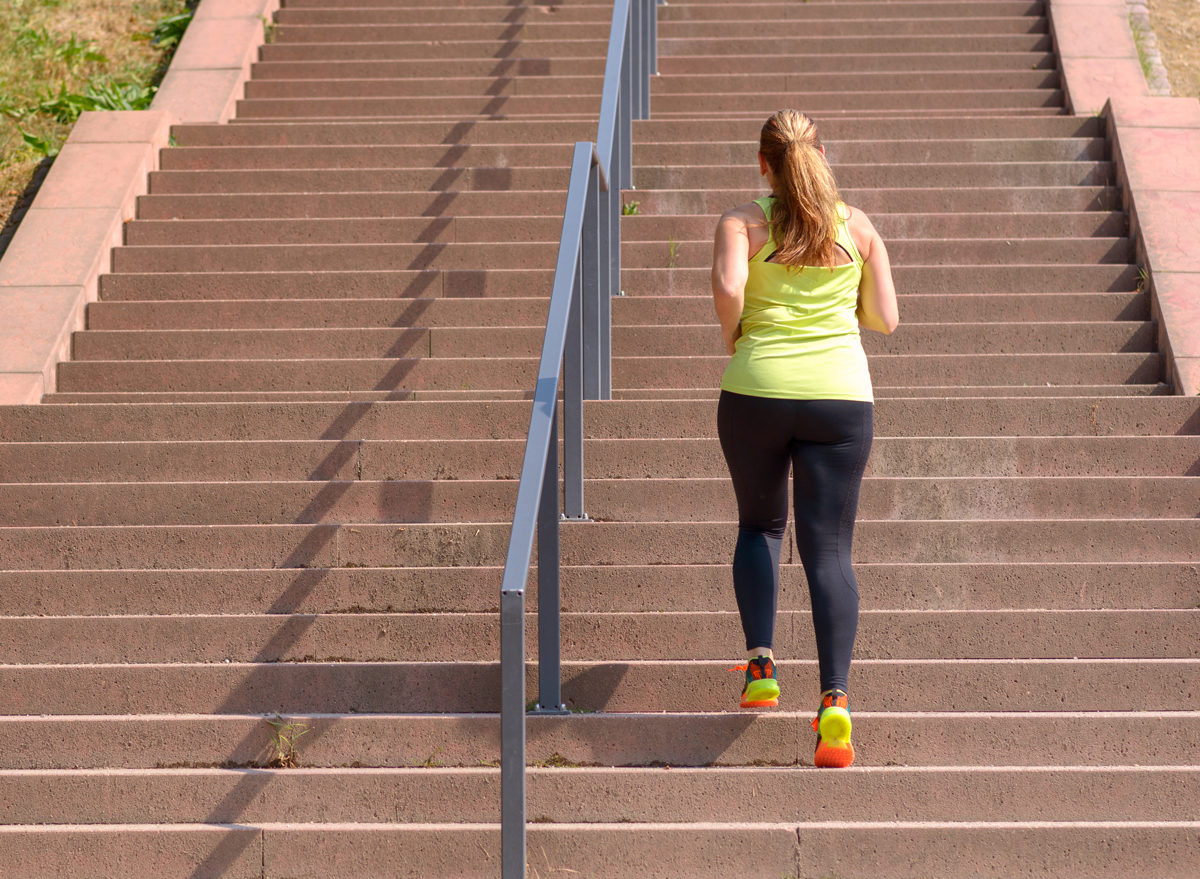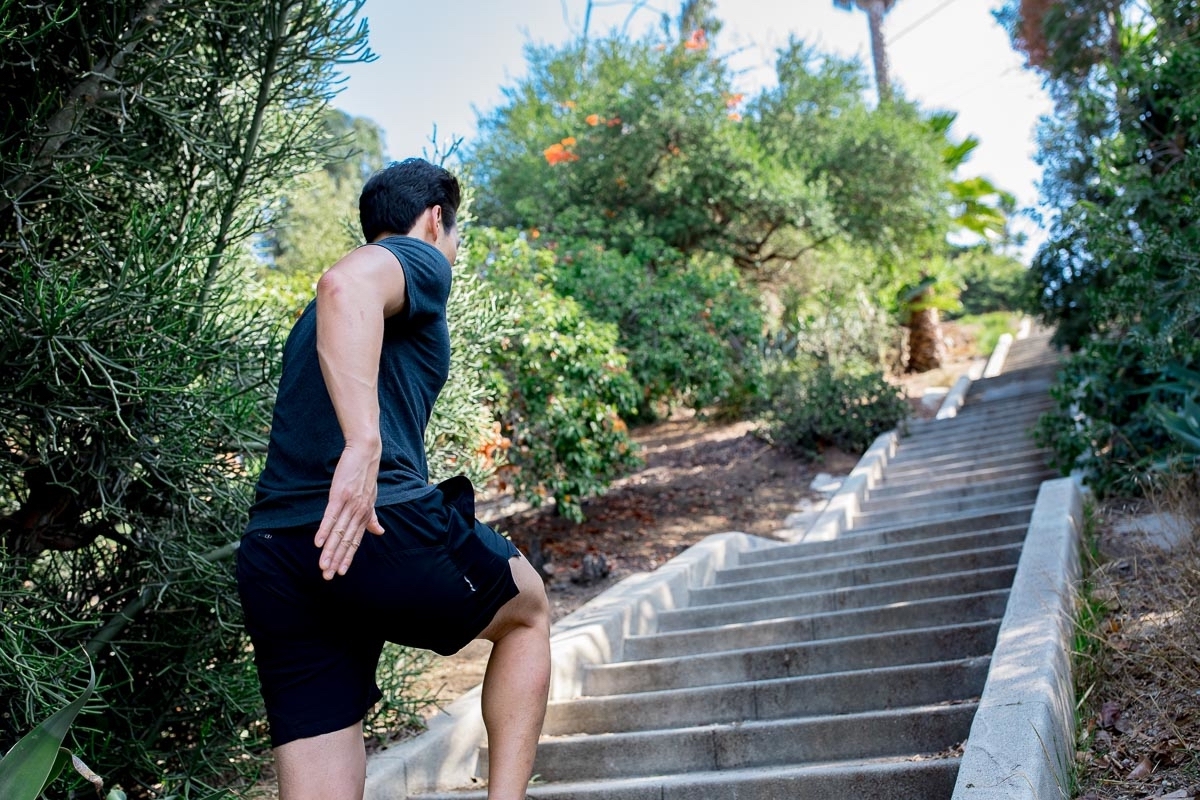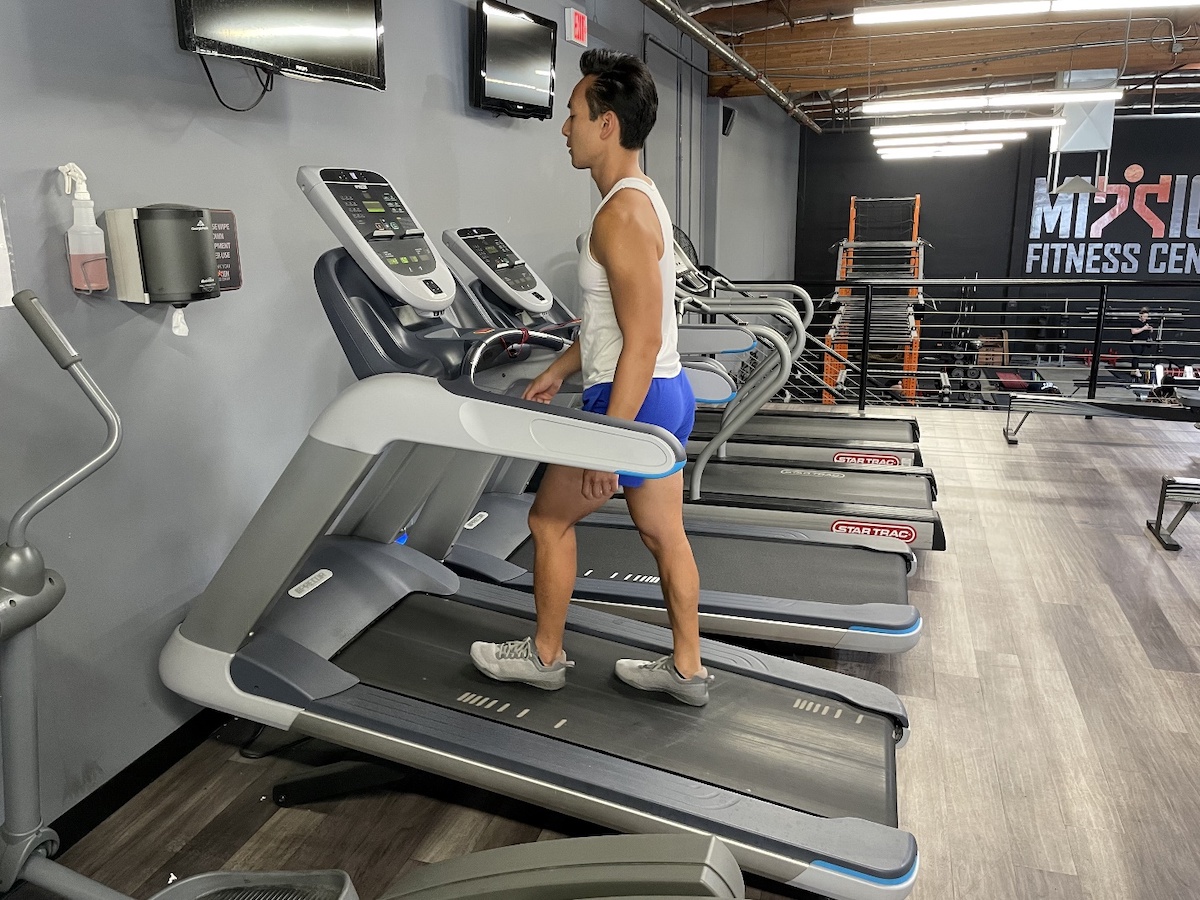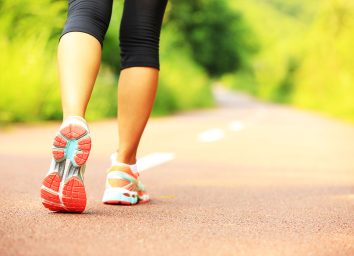Secret Side Effects of Walking on an Incline, Says Science

At this point, you probably already know that regular walking on a flat surface already offers an extensive list of health benefits. Whether it's enjoying a longer life or a healthier heart, there's no shortage of reasons to find time for an extra stroll or two through your local park every so often. Of course, when it comes to exercise, there's always room to ramp things up to reap further benefits. If you've been looking for a way to get more out of your usual walk, consider adding some incline to your daily steps.
"Treadmills have a variety of uses and one of them that many people don't take advantage of is the incline feature," Chrys Crockett, CPT, told NBC News. "Walking or running on a treadmill is meant to simulate how you walk or run outside. The incline feature turns what could be compared to walking or running on a sidewalk, into a motion more similar to walking up a mountain." Incline tweaks can intensify your workouts, he added, because you're placing more demand on the body to keep up.
This doesn't have to be done on a treadmill, either—finding a set of stairs or a series of hills outside can provide the same kind of challenge. What matters is not the setting, but that you're demanding just a bit more from your muscles and joints by changing your terrain.
But, what actually happens to our bodies when we walk this way? Read on to learn more about the benefits of walking uphill or on an incline. And don't miss: Secret Tricks for Walking for Exercise, According to Walking Specialists.
You'll burn more calories

Walking on an incline requires more energy and incurs a greater metabolic cost than a flat-surfaced trek. Translation: You'll burn more calories walking uphill, which can help get you lean.
"Walking on flat ground is an incredibly energy efficient activity," explains Jordan Duncan, DC, MDT, a chiropractor and expert in pain science at Washington's Silverdale Sport and Spine. "Our bodies have a unique ability to store energy during gait, for example in our tendons and myofascial slings, and then use that energy to help propel us forward. While this allows us to walk great distances with relatively minimal effort, we only burn about 100 calories per mile on average when walking on flat ground."
However, if you walk uphill, Duncan says it "increases the challenge" to your body, forcing your body to burn more calories. "Whether this is on an inclined treadmill or a hilly trail, walking uphill will help get you lean," he says.
For example, per Healthline and Nutristrategy, a 155 pound individual burns roughly 267 calories during an hour of walking at a pace of 3.5 mph. But that same person will burn 422 calories while walking uphill for an hour at the same pace. Similarly, a 180 pound person will only burn 311 calories while walking on flat ground, yet burns 490 calories for each hour spent walking on an incline. While it's unlikely that most people will be walking up inclines for a whole hour, these metrics should give you a sense of just how much more caloric burn you can enjoy if you do it for a bit. For more walking workout benefits, check out: What Walking for Just 20 Minutes Does to Your Body, Says Science.
You'll strengthen your posterior chain

Your posterior chain—made up of your glutes, hamstrings, spine muscles, and calves—runs from your neck all the way down to your feet. These muscles play a big role in walking, standing, sitting, and other movements. While engaging in an uphill walk, the hamstrings must pull double duty to facilitate thigh extension and the glutes are responsible for stabilizing the pelvis. In other words, the steeper the incline you find yourself navigating, the harder your posterior chain is being worked.
This matters, because a healthy, robust posterior chain offers a world of attractive health benefits. Improved posture, more athleticism and explosiveness, and reduced risk of injury are just a few.
The authors of this study, published in ACSM's Health and Fitness Journal, conclude that "a healthy posterior chain is required to counteract forces, sudden movements, and physical demands and is fundamental in physical performance, prevention of injuries, and physique development. A healthy posterior chain also enables good posture and motor control throughout various body positions, activities, and movements and supports optimal flexibility, endurance, strength, and muscular development." Looking for other muscle groups to work? Check out The Secret Fitness Trick for Walking Better Starting Now, Say Experts.
You can mimic the benefits of a running workout without running

Circling back to Exercise 101 for a moment, whenever anyone works out their heart rate increases. An elevated heart rate during exercise is beneficial for a number of reasons: more blood and oxygen reach the muscles, and pushing your heart rate up can help you increase your endurance and get the most out of your exercise. Usually, heart rate will increase inline with the intensity of said exercise. So, your heart is going to get a better workout from a jog than a casual stroll. However, walking on an incline actually represents an opportunity to "hack" this phenomenon.
Research has shown that walking uphill will elevate heart rate even if overall pace stays the same or even declines. One study published in the scientific journal PLOS ONE asked a group of experienced runners to move at the exact same pace while walking at no incline, a 2% incline, and a 15% incline. Despite not actually walking/running at a faster pace, participants' heart rates increased steadily as incline increased.
Another research project, released in the Indian Journal of Health Sciences and Biomedical Research Kleu, reports that in comparison to level and downhill walking at one's preferred pace, uphill walking resulted in significant increases in both heart rate and systolic blood pressure among a group of young adults.
You'll have stronger calves and ankles

Calves are often neglected during workouts, but walking uphill is a great way to target this important group of muscles and build stronger ankles. This study published in the Journal of Foot and Ankle Research found that incline walking activates calf muscles to a much greater extent than normal walking. "Walking on a medial incline ramp could be an effective exercise to improve the neuro-muscular function of the peroneal muscles and, therefore, might be a suitable exercise for people with weakened ankle evertors," the study authors conclude.
Another set of research published in the Journal of Bodywork and Movement Therapies came to similar conclusions, reporting calf muscle activation intensified as treadmill inclined increased. Stronger calves and ankles mean better balance, more leg power, and improved upward blood flow in the body. Want to get some more guidance on walking workouts? Be sure to read: This Simple Walking Workout Is an Amazing Fat Burner, Says Top Trainer.








